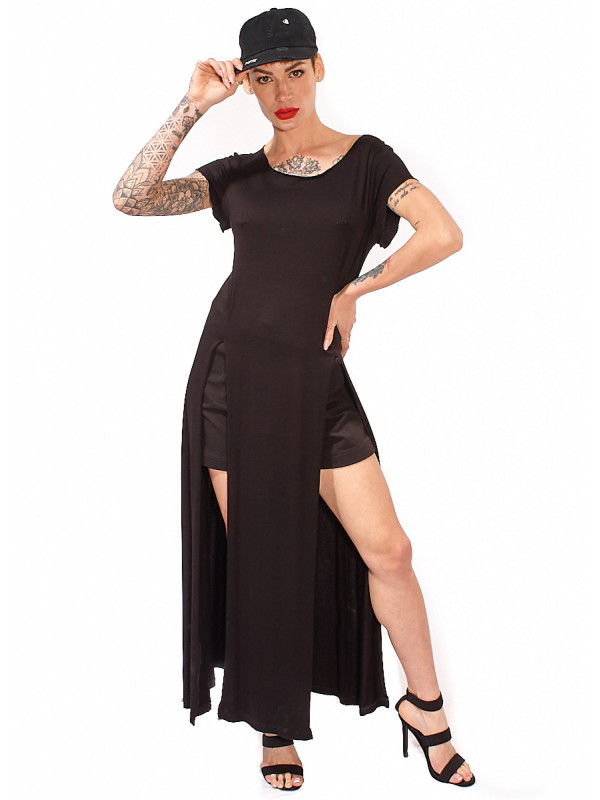Long viscose dress/duster.
Cuts on the front, raw cut finish. I love raw cut
Wiki
A woman's dress is a one-piece garment with an added skirt, which covers the body from the shoulders to the legs.
Although the fabrics and cut of a woman's dress vary greatly depending on the model (which may be with or without sleeves and more or less long on the legs), typically the dress consists of a skirt and bodice, sewn together to form a single piece. It is slipped on from the head using the neckline or a zip.
In Europe since the Renaissance, dresses of this style have only been used in women's fashion; however, this is not true for cultures other than the West, where men used to wear dresses of this type. Other examples include the Chinese until the beginning of the 20th century.
Up to and including the 19th century, women's dress included disproportionately large collars, or splints that gave rigidity to the fabric, in order to prevent agile movements and emphasise women's role in society. It was not until after the First World War that dress shapes were simplified in order to allow more freedom of movement or to emphasise the wearer's curves.
Also around 1920, dresses began to allow a glimpse of the ankles, causing numerous scandals.



